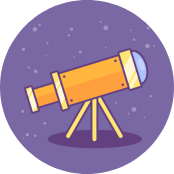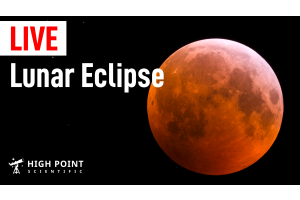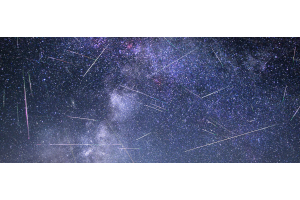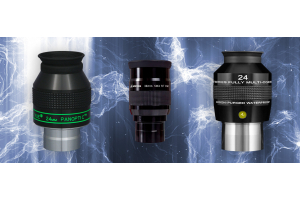
There are so many ways to introduce kids to astronomy, but to keep them engaged and help them learn more effectively, nothing beats a good arts and crafts project. But beyond the typical model of the solar system, what are some projects that are fun, easy, and educational all in one? Here are a few ideas to try out:
Phases of the Moon Toy
The phases of the moon might seem like a no-brainer to us, but to a child they’re something entirely new to learn about. Make it easy (and fun!) by putting together a simple cup toy that allows them to change and view the phases of the moon.
Materials:
- 2 clear plastic cups
- Black permanent marker
- Small piece of yellow paper (enough to cut a circle with 1-inch diameter)
- One sheet of black construction paper
- Glue
- Tape
- Ruler
- Scissors

Image Credit: Happy Tot Shelf
Instructions:
- First measure how tall your plastic cup is, then cut out a piece of black construction paper with a length to match the height and width long enough to fit the inside of the cup.
- Cut a 1-inch diameter circle out of the yellow paper and glue it to the black construction paper. Slide the construction paper into one of the clear cups with the yellow circle facing out. Use tape to hold the paper inside if need be.
- Slide the second plastic cup onto the first so that it’s on the outside (and the cup with the paper is on the inside.
- Take your permanent marker and write “Full Moon” under the yellow circle on the outside of the second cup.
- Think about your cup like a clock, with the New Moon at the 12 position. Turn the outer cup until the yellow circle is where 3 o’clock would be, write “Half Moon” or “First Quarter Moon”, then trace and color in the left half of the yellow circle.
- Turn the cup until the yellow circle is at the 6 o’clock position, write “New Moon,” then trace and color in the whole circle.
- Turn the cup to 9 o’clock and repeat step 5, replacing “First Quarter Moon” with “Last Quarter Moon” and drawing in the right half of the yellow circle instead of the left.
- Fill in the missing phases between the 12, 3, 6, and 9 o’clock positions. Make sure that the yellow circle is the part that represents the moon phase, such as crescent (in which case you’ll color in a little more than a semi-circle’s worth of the yellow circle).
If you’re teaching younger kids, avoid using the terms “waxing” and “waning” for the in-between phases. Older kids should learn these terms, however.
Paint Stick Solar System
This is a very simple but effective way to teach younger kids the order and general look of the planets. This mini solar system won’t be to scale, of course, but it will give children an idea of how their neck of the universe is laid out.
Materials:
- Paint stick
- 8 clothespins
- Paint
- Paint Brushes
- Markers

Image Credit: 123 Homeschool 4 Me
Instructions:
- Paint the entire paint stick black.
- Paint the sun at the top of the paint stick with yellow paint. Try to make it larger than anything else on the stick will be.
- Lay out your colors for the planets, and see if you can choose colors that roughly resemble the appearance of the planets. For example, Venus could be orange, Mars would be red, and Earth can be deep blue.
- Starting with Mercury, paint circles with the colors representing the planets going down the paint stick. They don’t have to be scaled perfectly, but try to show minor size differences (Earth would be bigger than Mercury and Mars, Jupiter is larger than anything else other than the sun, etc.).
- After the planets are done, if you have room, use white paint to represent the moons around the planets.
- Write the names of the planets on the 8 clothespins. When everything is dry, you and your child can go down the paint stick and see if they can match the correct clothespin to its corresponding planet.
LEGO Sundial
Want to teach your kids about both astronomy and time? Sundials are fun and instructive ways to show kids how our movements around the sun dictate our days. If you have a few LEGO bricks and a baseplate, you can make your very own simple sundial!
Materials:
- LEGO blocks
- LEGO baseplate
- Dry-erase marker

Image Credit: Mombrite
Instructions:
- Determine where the middle of your baseplate is by counting the studs.
- Stack 2x2 LEGO bricks to build the gnomon, the part of the sundial that casts a shadow.
- Choose a time to bring the LEGO sundial outside. It’s best to start at an exact hour. For example, 9:00, 10:00, etc. versus 9:15 or 10:15.
- Choose a good, sunny spot for the LEGO sundial. Make sure the spot is exposed to the sun all day with no shadows nearby.
- Mark the time using another 2x2 LEGO block.
- Place the LEGO block marked with the time where the gnomon casts the shadow.
- Repeat every hour as many times as you can.
- Place the rest of the LEGO blocks directly across the sundial to complete the entire “clock.”
Cardboard Space Shuttle
This project will bring out your inner child, without a doubt. To create the perfect environment for imagination and get your kids thinking about what it might be like to go into space, put together a space shuttle with them! You can do amazing things with cardboard, so grab a few spare boxes, some tape, LED lights, and of course your spacesuit.
Materials:
- Either a long cardboard box big enough for one or two kids to fit in when it’s on its side, or several cardboard boxes to cut up.
- Spare cardboard for the wings and other additions.
- Scissors
- Duct tape
- Markers for decorations
- LED lights (optional)

Image Credit: Mama Smiles
Instructions:
- If you have a long box, lay it on its side and cut a rectangle out of the top to form the cockpit. If you have several boxes, cut and tape pieces of cardboard together until you have a large rectangular shape that one or two kids could fit inside.
- Cut and attach pieces to the front of the shuttle to form an elongated, sloping front. Real space shuttles have rounded noses, but you can make yours boxy.
- Cut triangular pieces for the wings and attach them to either side of the long rectangular body.
- Cut another, smaller triangular piece for the tail fin and attach it to the top back of the body.
- Now that you have the main portion finished, the rest is up to you! You can draw designs on it, markings to match the real space shuttles, and even draw out and attach a control panel inside the cockpit. For added fun, string some battery powered LED lights on the front and inside.
Rock and Chalk Constellations
Most adults can only name one or two constellations, and fewer can point them out in the sky. Won’t you be proud when your child not only knows what all of them look like, but can name some of the stars in them, too? Constellation rock and chalk art lets kids get creative while also teaching them about the constellation shapes and stars.
Materials:
- Chalk
- Small rocks/pebbles
- Print-outs of the constellations that include markings where each major star in the constellation is located (you can also hand-draw these for your kids)

Image Credit: KiwiCo
Instructions:
- First, you’ll need a good sized section of concrete to draw on, or even a chalkboard laid flat on the ground. Then, grab your chalk, collect some rocks, and get ready to make some constellations.
- Using the print-outs, help your child draw out the shape of the constellation. A good place to start is with the major stars. Mark out where those should go, then simply connect the dots to recreate the constellation’s shape.
- Next, place a rock where the major stars go. For younger kids, knowing the names and shapes will be plenty. Older kids can also be asked to give the names of the stars and where they go in each constellation.
Art and astronomy go hand in hand! By coming up with creative ways to get kids engaged with science topics, you can foster an interest that might grow into a full-blown obsession that will guide them to a future career in a STEM field, or at the very least teach them about this wonderful universe we live in.

Learn More
Interested in learning more about astronomy and our universe? Not sure where to begin? Check out our Astronomy Hub to learn more!







